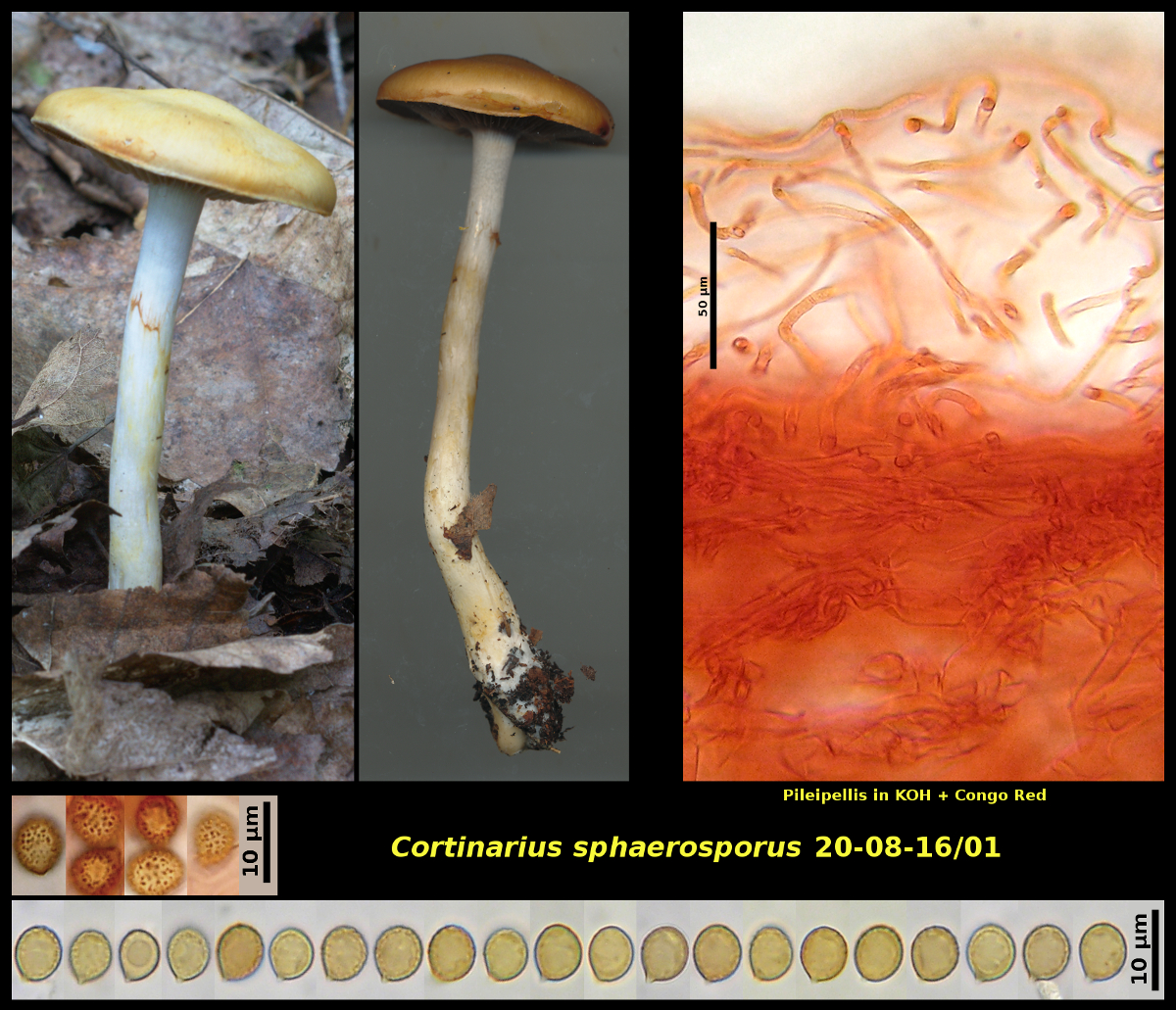Fleshy Fungi of New Brunswick >>
Cortinarius sphaerosporus
Cortinarius sphaerosporus Peck

Solitary in in leaf litter, associated with Abies balsamea, Acer saccharum and Populus tremuloides, Nepisiguit Protected Natural Area, New Brunswick (20-08-16/01).
Pileus broadly convex, with a low broad umbo, not striate, light yellow brown (HSV55:50-60:90), glabrous, probably viscid, 44 mm in diameter. Stipe equal down to the slightly swollen base, white above the cortinal zone, very pale yellow brown (HSV55:30È90) below, with a single thin cortinal ring, probably viscid, 120 X 7-8 mm. Lamellae not seen when young, brown (HSV35:50:80), close, adnate to subdecurrent, not marginate. Flesh concolorous with the surface tissues, lacking a distinctive odour.
Basidiospores broadly ellipsoidal, finely warted, not dextrinoid, 6.1-7.0 X 4.8-5.9 μm, Q = 1.15-1.28 (average[21]: 6.7 x 5.6 μm, Q = 1.20). Pileipellis composed of a thick gelatinous suprapellis above a compact subpellis of narrow parallel hyphae. Pileus trama of interwoven hyphae of much larger diameter than those of the pileipellis. The illustration above shows the relationships among these three layers.
Cortinarius sphaerosporus has received little attention in the mycological literature. It was described by Charles Peck from New York State in 1874 and has been collected and identified sporadically ever since. Kauffman, in North American Flora, differentiated it from the very similar C. delibutus by its smaller basidiospores. According to Kauffman and the mordern treatment in Funga Nordica the basidiospores of C. delibutus measure 7-9 X 6-8 μm while those of C. sphaerosporus are 6-7.5 X 5.5-6.5 μm. The New Brnswick material illustrated here has spores fitting comfortably within the range of C. sphaerosporus. A watercolour painting by Louis C. C. Krieger, made from fresh material resembles our collection closely.
Although this seems to be the first record of C. sphaerosporus in New Brunswick, Mycoportal reports a collection of this species from Nova Scotia in the University of Michigan Herbarium, collected and identified in 1931 by Alexander H. Smith, so it may well occur throughout the Maritime Provinces
As discussed under C. caninus, C. sphaerosporus belongs to the small section Delibuti of Cortinarius. In spite of its slightly viscid pileus and stipe it does not belong with the subgenus Myxacium where it has frequently been classified. Species of section Delibuti all have very broad basidiospores which are quite different from those in species of subgenus Myxacium.
Photograph: D. Malloch (20-08-16/01).